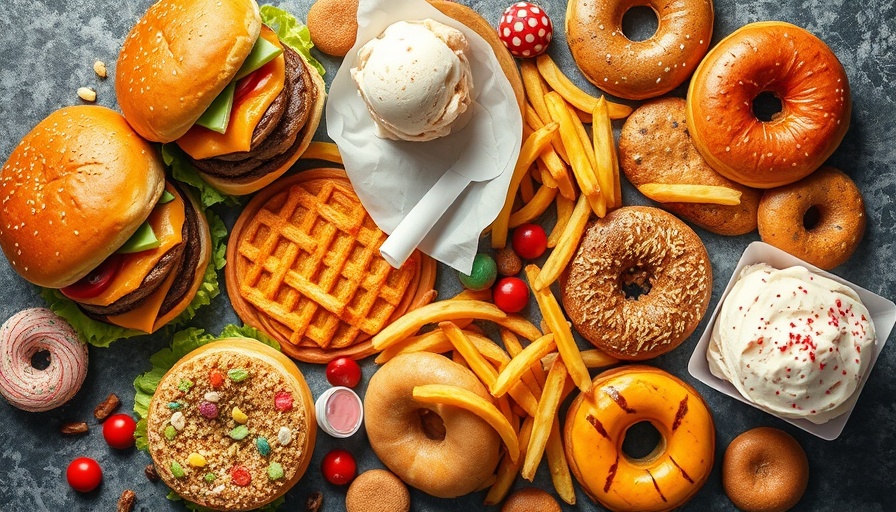
The Dangerous Allure of Ultraprocessed Foods
As children’s health continues to decline, a pressing new report from the MAHA initiative has reignited concerns about ultraprocessed foods and their alarming consequences. Ultraprocessed foods—those that contain numerous additives and are a far cry from their natural origins—are pervasive in modern diets, comprising a staggering 70% of children's diets and 50% of pregnant and postpartum women’s diets in the United States. This statistic underscores a critical public health issue as highlighted by the recent research and government stance on chronic diseases linked to diet.
Understanding Ultraprocessed Foods
But what exactly constitutes an ultraprocessed food? Defined through the Nova Food Classification System, these items fall into Group 4, which includes snacks like chips, sodas, and candy bars that are engineered to be hyper-palatable. They typically boast an extensive list of ingredients, many of which are not found in a typical home kitchen, such as artificial preservatives and food colorings.
A Connection to Health Risks
A growing body of scientific evidence is linking the consumption of ultraprocessed foods to serious health conditions. Studies have shown that increased intake can lead to overweight conditions, type 2 diabetes, and even cardiovascular diseases. The alarming rates of obesity in youth are often traced back to dietary habits that prioritize convenience and flavor over nutritional value.
Historical Context: Evolution of Processed Foods
The debate surrounding processed foods dates back several decades. Initial concerns arose in the late 20th century as the connection between diet and chronic health issues like obesity and diabetes began to gain traction. Indeed, government and health organizations have become increasingly vocal regarding the dangerous shifts towards more ultraprocessed options in diets.
The Public's Growing Awareness
Awareness of the negative impact of these foods is slowly permeating into public consciousness. The MAHA report emphasizes not only the health ramifications faced by children but also calls for a cultural shift in how we approach diets at a systemic level. Engaging communities in discussions about healthy eating versus convenient options holds the potential to reshape consumer behaviors and influence policy.
Future Predictions: A Shift Towards Whole Foods
Experts suggest that if current trends continue, we will likely see even higher rates of diet-related diseases among younger generations. However, there’s hope as many younger individuals express desires for healthier, more sustainable food choices. Emerging trends suggest a possible rebirth of interest in whole foods amid concerns about ultraprocessed options.
Counterarguments: The Convenience Factor
While the benefits of moving away from ultraprocessed foods are clear, some argue that convenience drives consumer choices. For busy families and individuals, the ease and speed of preparing ultraprocessed meals cannot be overlooked. However, efforts to promote healthier alternatives can bridge the gap between convenience and health.
Decisions You Can Make Today
As consumers, there is much each individual can do to improve their dietary choices. Start by reading labels diligently; understanding what ingredients are in foods can empower informed decisions. Families can also cultivate food education through cooking classes or local farmers' markets, which promote fresh produce and home-cooked meals.
Take Action for Healthier Futures
In light of the alarming evidence surrounding ultraprocessed foods, it's essential now more than ever to prioritize our health and the health of future generations. Engaging with community initiatives, advocacy groups, and awareness programs can create a ripple effect, fostering healthier eating habits across demographics.
While the road to improving children's health through dietary changes may be long and challenging, awareness is the first step towards progress. Empower yourself with knowledge, make informed dietary choices, and advocate for better food policies. Join the movement for healthier futures today!
 Add Row
Add Row  Add
Add 




 Add Row
Add Row  Add
Add 

Write A Comment